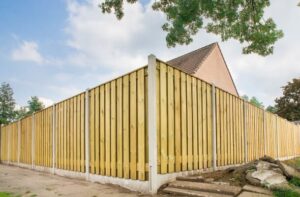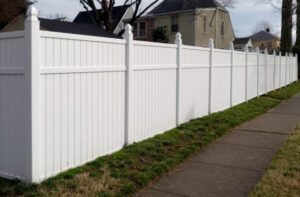Geography of Quincy, Massachusetts
Quincy is a city located just south of Boston on the South Shore of Massachusetts. With a population of over 90,000, Quincy is the 8th largest city in Massachusetts and has a rich history dating back to colonial times. The city’s location along Boston Harbor and its proximity to Boston have greatly influenced Quincy’s development and geography over the years.
This article will provide an overview of Quincy’s geography, including its location, topography, climate, neighborhoods, parks, economy, transportation, and more. Whether you’re a lifelong resident or just visiting, learning about Quincy’s diverse geography helps appreciate everything this historic city has to offer.
Location
Quincy is situated on the South Shore of Massachusetts, bordered by Boston to the north and northeast, Braintree to the south, Randolph and Milton to the west, and Dorchester Bay and Quincy Bay to the east. Quincy is approximately 10 miles south of downtown Boston and Logan International Airport.
The city spans an area of 26.9 square miles, making it the 8th largest city by area in Massachusetts. Of that area, 21.6 square miles is land and 5.3 square miles is water. Quincy contains several islands in Boston Harbor and Quincy Bay, including Moon Island, Long Island, Hangman Island, Raccoon Island, and Nut Island.
Some important distances from Quincy include:
- Boston (downtown): 10 miles
- Cambridge: 12 miles
- Logan Airport: 6 miles
- Providence, RI: 50 miles
- Cape Cod: 60 miles
Bordering Cities and Towns
Quincy shares borders with several other cities and towns:
- North: Boston
- Northeast: Boston (Dorchester neighborhood)
- East: Hull
- South: Braintree, Randolph
- West: Milton
Being situated so close to Boston has greatly benefitted Quincy economically and culturally over the years. The two cities share close transportation links and many Quincy residents work in Boston.
Topography
Quincy covers a diverse geographical area, with elevations ranging from sea level along the coastline to over 180 feet above sea level in the western portion of the city. Some of the major topographical features include:
Coastline
Quincy has an extensive coastline along Dorchester Bay and Quincy Bay totaling nearly 16 miles. The shoreline includes beaches, marinas, islands, wetlands, and residential neighborhoods with prime views of the Boston skyline. Wollaston Beach along Quincy Shore Drive is the largest and most popular beach in the city.
Blue Hills
The southern portion of Quincy stretches into the northern foothills of the Blue Hills Reservation. The Blue Hills rise to a maximum elevation of 635 feet and offer great hiking and outdoor recreation opportunities for Quincy residents.
Neponset River
The Neponset River forms the southwest boundary between Quincy and Milton. This major river flows from the Blue Hills before emptying into Dorchester Bay.
Squantum
Squantum is a hilly peninsula located between Quincy Bay and Dorchester Bay. It contains Squantum Point Park, views of downtown Boston, and higher elevations compared to coastal areas.
Wetlands
There are over 600 acres of protected wetlands throughout Quincy, including creeks, marshes, and swamps. Some major wetland areas include Town Brook and Furnace Brook.
Climate
Quincy has a humid continental climate typical of coastal southern New England. Winters are cold, while summers are warm and humid.
Temperature
- Average high in July/August: 82°F
- Average low in January: 22°F
- Record high: 104°F (1949)
- Record low: -11°F (1934)
Precipitation
- Average yearly rainfall: 44 inches
- Average yearly snowfall: 43 inches
- Wettest month: November (4.7 inches)
- Driest month: July (3.1 inches)
Natural Hazards
- Nor’easters: Powerful storms with heavy rain/snow and high winds, usually in winter. Can cause coastal flooding.
- Blizzards: Heavy snow, winds over 35 mph, poor visibility. Can bring over 1 foot of snow.
- Hurricanes: Rare but can impact Quincy and cause storm surge flooding. Hurricane Bob (1991) was very damaging.
- Heat waves: Periods of prolonged high temps over 90°F, common in summer.
Neighborhoods
Quincy contains many distinct neighborhoods, often named after the geographic areas, colonial-era developments, or shopping districts within them:
- Adams Shore: Coastal area along Quincy Shore Drive, named for President John Adams.
- Atlantic: Near Nantasket Beach, includes Marina Bay.
- Germantown: 19th century planned neighborhood with Victorian homes.
- Houghs Neck: Peninsula neighborhood surrounded by water. Popular beach area.
- Merrymount: Western border with Milton, close to Blue Hills.
- Montclair: Northern residential area bordering Milton.
- North Quincy: Main commercial district along Hancock Street.
- Quincy Center: Downtown district with government, retail, MBTA station.
- Quincy Point: Where Quincy first developed in the 1600s.
- Squantum: Peninsula between Quincy Bay and Dorchester Bay.
- West Quincy: Western side bordering Interstate 93.
- Wollaston: Neighborhood surrounding Wollaston Beach and MBTA station.
Many neighborhoods combine residential areas with business districts, dense urban development, and access to parks or the coastline. This diversity is part of what makes Quincy’s geography so interesting.
Parks and Open Spaces
Quincy has over 1,100 acres of public parkland and open space for residents to enjoy:
- Blue Hills Reservation (shared): Over 7,000 acres with hiking trails and views.
- Wollaston Beach: Popular 2-mile public beach along Quincy Bay.
- Merrymount Park: 64 acres with a reservoir and nature trails.
- Adams National Historical Park: 13 acres with monuments and the birthplaces of two presidents.
- Squantum Point Park: 60 acres on the Squantum peninsula with ocean vistas.
- Public golf courses: 2 full 18-hole public courses in the city.
Other major parks include Pageant Field, Marina Bay, Furnace Brook Park, and Houghs Neck. Along with parks, Quincy’s wetlands, beaches, islands, and harbor walkways provide open space access.
Economy and Business
With its close proximity to Boston, Quincy has developed into an economic hub over the past few decades. Some major industries include:
- Financial services – Banks and investment firms along Hancock Street in North Quincy.
- Biotech and healthcare – Facilities for Boston Scientific, Reed & Barton, and other companies.
- Education – Quincy College, Eastern Nazarene College, and many primary schools.
- Shipping/boat building – Fore River Shipyard produced many famous ships. Now a major marina area.
- Retail – Numerous shopping centers and districts throughout the city.
- Tourism – Draws visitors to its historic sites, parks, and water amenities.
Quincy also benefits from Boston’s strong technology, healthcare, education, and financial services sectors with its proximity to the city. Many residents commute into Boston or other South Shore cities for work.
Transportation
Quincy developed as a hub between Boston and the South Shore, creating many transportation links:
MBTA Subway
The Red Line subway runs from Quincy Center to Boston, Cambridge, and Somerville. Important stations include:
- Quincy Center
- Wollaston
- North Quincy
- Quincy Adams
MBTA Commuter Rail
Commuter rail trains on the Old Colony line stop at:
- Quincy Center
- Wollaston
- North Quincy
Direct service to Boston, Braintree, Plymouth, and beyond.
Interstates and Highways
- Interstate 93 and Route 3 run along Quincy’s western border.
- Interstate 495 has an exit in Quincy.
Bus Services
Local bus routes operated by the MBTA and private companies link neighborhoods to subway and commuter rail stations.
Regional Airports
- Logan International Airport is only 6 miles north of Quincy.
- Worcester Regional Airport and Providence’s T.F. Green Airport are within a one hour drive.
Conclusion
From its hills and shorelines to its historic neighborhoods and parklands, Quincy has a diverse and interesting geography. The city’s location and transportation access have shaped its growth, while its natural features and open spaces give Quincy great recreational opportunities. Learning about the unique geography and landscape of this historic city helps one better understand the many sides of Quincy, Massachusetts.
Hours
Monday: 9:00 AM – 5:00 PM
Tuesday: 9:00 AM – 5:00 PM
Wednesday: 9:00 AM – 5:00 PM
Thursday: 9:00 AM – 5:00 PM
Friday: 9:00 AM – 5:00 PM
Saturday: 9:00 AM – 5:00 PM
Sunday: 9:00 AM – 5:00 PM
Contact Us.
Get Solutions For All Fencing Services
Every day from
9:00 — 5:00
Call to ask any question




